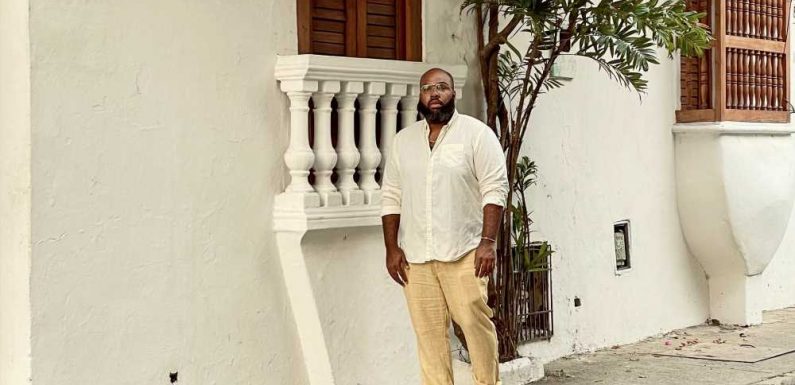
During the course of the COVID-19 pandemic, I was lucky enough to travel to a handful of destinations for some time to relax and recharge, but on my latest trip, I was looking for something more.
When I set out to visit Cartagena, Colombia in April, it was my first time back to traveling the way I used to pre-pandemic. Well, not 100% back – I still wore masks, practiced social distancing, and took proper precautions – but it was my first time since COVID-19 that I was visiting a new country with plans to fully explore, connect with locals, and immerse myself in new experiences every day.
Load Error
The beautiful city of Cartagena is as rich in vibrant color as it is in history and did not disappoint the culture seeker in me who was ready to connect with a world I wasn’t familiar with. The electric energy of the city was fueled by the welcoming locals who were grateful for my visit, especially during the pandemic, when so many of their businesses have been suffering.
Here’s what it was like to visit this South American gem.
Pre-travel Process
Colombia requires physical proof of a negative COVID-19 PCR test taken within 96 hours before departure. Results will be checked by the airline before boarding in the U.S. and by customs upon landing. If travelers do not take a COVID-19 PCR test prior to flying, they may take one upon arrival, but will then be subject to isolation until negative results are obtained or can opt for 14-day isolation.
Within 24 hours of flying, visitors are also required to fill out an immigration form that asks basic travel information as well as a few COVID-19 related questions. The form is required to be completed within 24 hours of leaving the country.
Getting to Cartagena
Gallery: 42 incredible things to do at least once in a lifetime (StarsInsider)
There were several direct flight options from New York City to Cartagena. Located in the northern part of South America, the flight time, typically around 4 hours and 40 minutes, is surprisingly shorter than to some eastern Caribbean islands. Masks are required at all times throughout JFK International Airport and Rafael Núñez International Airport.
Social distancing is prompted by floor markers and signs throughout both airports. Upon landing at CTG, my temperature was taken and I was asked to sanitize my hands. The customs process was simple and straightforward and I was on my way to the hotel within about 15 minutes.
Current Restrictions
Mask wearing and social distancing is required in all public areas except while seated to eat and drink, or at the pool and beach. The city was very much alive and open, with the streets of popular areas like The Walled City and Getsemaní full of locals and visitors. Popular restaurants, bars, and attractions require reservations to maintain set capacities throughout the day.
While Cartagena had no curfew during my visit, we were told that Colombia’s capital, Bogota, had just implemented a curfew. As cases of COVID-19 continue to fluctuate, it is important to check the latest, most up-to-date information on Colombia’s official tourism website.
Experience While Traveling
I opted to stay in the Walled City of Cartagena, an area filled with history, brightly painted buildings, cobblestone streets, and an abundance of floral archways at every turn. Just walking around this area is an experience in itself – with amazing people-watching – along with so many amazing restaurants, rooftop bars, and shopping options within a 10-minute walk.
Although this is where I felt the strongest buzz of city life, there are countless options for day trips to take for a change of scenery.
There are several beaches in Cartagena that visitors and locals enjoy, however, many drive outside city limits or charter a boat to experience either more secluded beach experiences or beaches with pristine water. Because the city of Cartagena is hugged by the Caribbean sea, there are beaches that boast cerulean and turquoise waters with powdery white sand shores, like the popular Playa Blanca in Isla Baru, which is about an hour and a half drive from Cartagena.
https://www.instagram.com/p/CNhkC17l0u_/
View this post on Instagram
Within a five-minute drive from Playa Blanca is the lesser-known but fascinating Aviario Nacional de Colombia, a bird park and conservation that is home to over 190 species of birds and over 2,000 specimens. Flamingos, hawks, eagles, toucans, woodpeckers, and more are exhibited in staged environments that reflect their natural habitats throughout Colombia (desert, coast, rainforest/tropical, swamp) showcasing the biodiversity of the region. The one-way walking path through the aviary is about two hours on average.
As for its local population, Cartagena and the surrounding regions are about 30% Black or Afro-Latino. Many Black people in Colombia live in palenques, communities that were created as Black Colombians sought refuge from slavery in the city limits. San Basilio de Palenque is one of the largest and most popular palenques about an hour outside of Cartagena city proper. Here, visitors can learn about the long and still-existing Afro-Colombian history where many locals speak a language that is rooted in Bantu (a language spoken in several central and west African countries), practice traditional ceremonies, dance, religions and more.
For my first time back out in the world with the intention to truly explore again, Cartagena was a great reminder of what it felt like to travel pre-pandemic. The rush of adrenaline that comes with new adventures, eyes widening with curiosity, and the readiness to encounter an endless well of possibilities all returned. Although I don’t know if travel for me will ever be as carefree as it once was, Cartagena offered the opportunity to fully indulge again and has me looking forward to more culturally immersive experiences even further from home.
Source: Read Full Article










